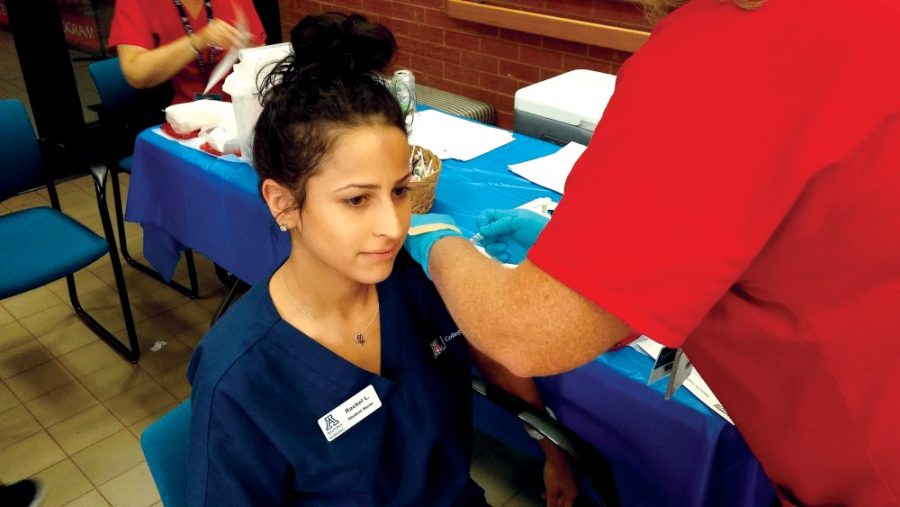Flu season has officially begun and the Centers for Disease Control and Prevention is urging the public to get vaccinated as soon as possible with the reminder that individuals are not protected until two weeks after administration of the vaccine. Despite the severity of last year’s season, health officials are confident in the effectiveness of the new vaccine as a result of some added changes.
According to the CDC, the flu vaccine in the previous season was only able to reduce the risk of serious disease by 23 percent compared to an individual who did not get vaccinated. This was due to a last-minute genetic mutation of the flu virus strain H3N2 that made the vaccine less responsive.
“The flu virus mutates very rapidly and likes to combine with many other types of flu viruses,” said Kelly Reynolds, a UA researcher and associate professor for the Mel & Enid Zuckerman College of Public Health. “So many of the influenza viruses that [circulate are] a mixture of bird, pig and human viruses. That’s just the nature of the influenza virus—it is highly variable.”
Currently, there are 142 national influenza centers in 113 countries that conduct year-round surveillance for influenza and research influenza disease trends, according to the CDC. Data collected from these centers is used to predict which viral strains will be most common during the upcoming season. This year, there will be several vaccine options for the public, one of which is a quadrivalent injection.
A quadrivalent vaccine contains two influenza A and two influenza B viruses. Having two B viruses can be advantageous because experts usually choose only one B virus despite there being two very distinctive lineages of B viruses that circulate during most flu seasons.
The CDC is encouraging the public to maintain good health habits, such as covering the mouth when coughing and good hand hygiene, in order to help stop the spread of germs and for prevention of illnesses like the flu.
The findings of a recently published UA study demonstrate the effectiveness of implementing hand hygiene interventions to decrease viral transmission. The study, co-authored by Reynolds, involved infecting a push-plate door handle attached to the entrance of a UA College of Public Health office building with an MS-2 virus. The study focused on the spread of the virus within the building and its 80 approximate office workers. The virus was safe to use because, although it is very similar to the influenza virus, it only infects bacteria and not humans.
“In about four hours, close to 50 percent of the surfaces commonly touched had the virus on it and about half of the people’s hands had the virus on it,” said Charles Gerba, a UA professor of soil, water and environmental science and co-principal investigator on the study. “So the virus spread very quickly. The first place the virus starts to show up in a large number is the break room, because first thing in the morning, where does everybody go? To get coffee in the break room.”
The researchers then introduced an alcohol-based hand sanitizer dispenser in the break room and provided alcohol-based hand sanitizers and disinfectant wipes to the office workers.
“We repeated the experiment again and found out that we reduced the amount of viruses on surfaces by about 80-90 percent, so it had a big impact,” Gerba explained. “I don’t think people wash their hands as adequately as they should, but hand sanitizer is very effective.”
According to Gerba, the common cold is most effectively transmitted by getting it on your hands. A person can become infected by rubbing their eyes, as most do not realize the connection between the eyes and nose. This information is especially important for college students, considering a 2008 Berkeley study that showed college students bring their fingers to their face an average of 16 times per hour.
“The main thing we want [to] emphasize is good hand hygiene—particularly for students because you have to go to so many classrooms, but you can’t disinfect all of the surfaces,” Gerba said. “However, you can reduce your odds by 50 percent by practicing good hand hygiene.”
Follow Kimberlie Wang on Twitter.









